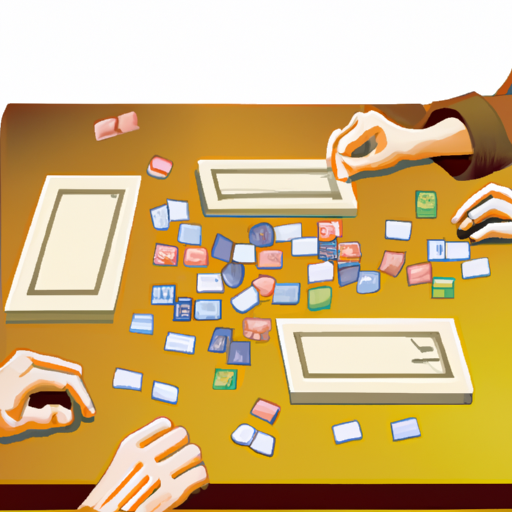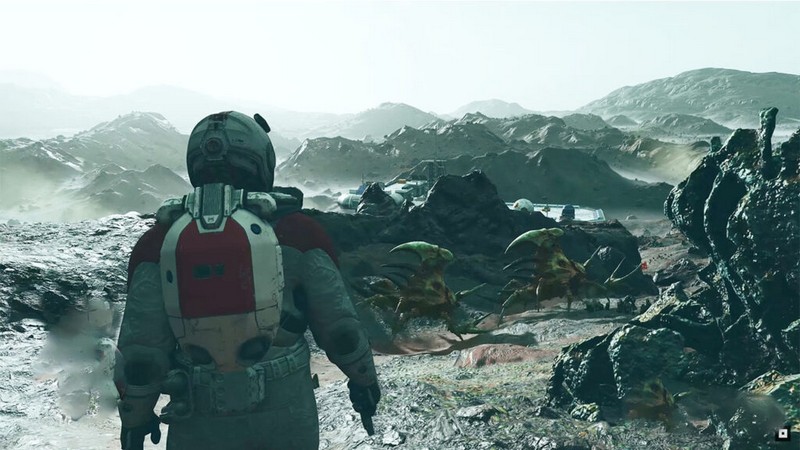The classic game of Guess Who is a fun and engaging way for children to practice their problem-solving skills. In order to successfully assemble the game, several components must be collected and organized in the correct manner. This article will provide detailed instructions on how to properly assemble this game, from gathering the necessary materials to making it more exciting.
The first step involves obtaining all the pieces that are needed for assembly. These include two full sets of characters, a board with slots for each character, and twenty-four cards that feature questions about each character’s physical characteristics. After collecting all these components, they must be assembled in a systematic fashion in order to create an enjoyable playing experience.
Gather the Necessary Materials
The necessary materials for the activity must be collected in order to proceed. The materials needed to assemble a Guess Who game are simple: two sets of cards with images, and two card holders or frames. The cards should have six different colored faces on them, so it is important to find a set that has the desired colors. It is recommended to choose bright and contrasting colors such as yellow, red, green, blue, purple, and orange that will make it easier to distinguish between the images. The card holders can either be purchased from craft stores or made from cardboard boxes.
When assembling the game pieces, it is also important to take into consideration how much space each player needs for their playing area. This means finding an appropriate sized frame or holder that will provide enough space for each person’s cards without overcrowding both sides. Additionally, making sure all of the edges are cut evenly will ensure no one has an advantage while playing the game due to uneven cuts on their side of the board.
The final step when gathering supplies is ensuring all pieces are accounted for before beginning play; this includes double-checking that there is an even number of cards in each color and confirming each side has exactly 24 cards total in their set up. All these steps combined will help create a smooth experience when putting together and playing Guess Who!
Assemble the Game Board
Constructing the game board is an important step in creating a fun and engaging experience for players. To begin, select a flat surface that can accommodate all of the pieces required to play. This could be a table, the floor, or any other sturdy surface with enough room for two players to easily choose their characters and check the rules of the game. The game board should consist of two separate side boards – one for each player – with 24 character cards placed face down on each side. Once both boards are constructed, it’s time to start playing!
Players must then take turns selecting one card from their side of the board without looking at which character it is. After choosing a card, they should look at its image and place it back face down in front of them so that only they can see it. Then repeat this process until each player has seven cards on their side of the board. Assembling the game board correctly is key to ensuring that players have an enjoyable experience while playing Guess Who?
The last step before starting to play is to set up a rule sheet detailing how many guesses each player gets per round and what happens when someone correctly identifies another player’s character. Once these guidelines are established, you’re ready to start playing Guess Who?
Insert the Game Pieces
Once the game board has been constructed, the next step is to insert the game pieces. Determining which pieces are needed for playing Guess Who can be done by examining the instructions provided with the game. Generally, this requires two sets of characters printed onto cards and inserted into slots in the game board. These characters should be cut out carefully before being put into place. Once they have been cut out, they should be arranged on either side of the board so that each player has a set of characters. It is important to ensure that all of the characters are facing in one direction and that none of them are upside down or backwards when placed in their respective slots on the board.
The characters themselves can be printed off from an online source or purchased as part of a kit if necessary. If printing off, it is recommended to use cardstock rather than regular printer paper to make sure that they last longer during gameplay. Additionally, it is best practice to laminate them after printing so that water and other liquids do not damage them over time. Once printed, these should be cut out with scissors before being arranged on either side of the board according to instructions provided with or without a kit purchase.
It is also important when placing guesses who pieces into their respective slots on either side of the board that each slot fits properly and securely holds each piece in place. To ensure this happens it may be necessary to adjust some slots with a pair of scissors or another tool depending on what type of material was used for construction purposes previously discussed in subtopic one: Assemble The Game Board . This will help prevent any pieces from accidentally falling out while playing and ruining someone’s chances at winning!
Organize the Game Cards
Properly organizing the game cards is essential for successful play of Guess Who. All players should arrange their cards in a grid or line, making sure each character is facing the same direction, and that all characters can be seen from either side of the card. Players should also pick out two characters to represent themselves for play. The chosen characters should be placed at the top of the card pile, so they are easy to find when needed during game play.
Having an organized set of cards helps prevent players from missing out on their turn due to a disorganized collection of game pieces. Additionally, it allows players to quickly identify which characters have already been eliminated throughout the course of the game, aiding them in narrowing down their choices and guessing correctly more often. It is important that each player organizes their own set of game cards before beginning a round as well as regularly checking back in with them throughout gameplay to ensure accuracy and fairness in elimination process.
Players can also benefit from organizing their cards into categories such as facial features or clothing items this can help them remember which components are available for use when asking questions about other players’ characters during gameplay and make it easier for everyone involved to engage with the game overall.
Make the Game Even More Fun
Adding extra components to the game of Guess Who can help to create a more exciting and engaging playing experience. Variations such as allowing players to give clues, introducing additional playing pieces or cards, or developing different playing strategies can add an extra layer of complexity that increases the challenge and enjoyment for all involved. It is possible for players to use hints about the character’s physical appearance in order to make guesswork easier, however providing specific information about characteristics such as hair color or clothing can also be used as a strategy.
In addition to adding variations, including props or accessories as part of the game can be a fun way to enhance its playability. For example, hats and glasses are easy items that could be used by players when guessing who has been chosen by their opponent. As well as being visually stimulating, these types of props provide an opportunity for creativity during gameplay which is likely to increase player engagement while they strive toward winning.
Thinking outside the box with regards to how the game is played will lead to enjoyable experiences for everyone involved and may even introduce new levels of difficulty as players attempt more complex strategies in order to win. While it may not always be feasible for all participants due time constraints or available resources, introducing various components into Guess Who makes it an enjoyable game that people from all ages can enjoy whilst learning valuable skills like problem-solving and deduction.
Frequently Asked Questions
Is Guess Who suitable for younger children?
Guess Who is a popular board game designed for ages 6 and up. It can provide educational benefits to younger children, as it encourages them to use problem solving skills in order to determine who their opponent’s mystery person is. However, there are safety concerns associated with the game, as the small pieces may pose a choking hazard for younger children who are still developing fine motor skills. Therefore, it is important that parents supervise their children while playing Guess Who and make sure they understand how to play safely.
How long does it take to assemble the game?
Assembling a Guess Who game can be done in a relatively short amount of time. However, the exact length of time varies depending on one’s experience level and familiarity with the game. Generally speaking, it should take no more than 15 minutes if one follows some basic time-saving tips. For instance, unpacking all pieces first before beginning assembly can help save time by eliminating the need to search for missing pieces during the process. Additionally, understanding playing strategies prior to assembly could also aid in quickening the process as one would not have to pause or delay assembly due to confusion about how to play.
Are there any variations of Guess Who?
Guess Who is a popular board game involving two players attempting to guess each other’s mystery characters. It has been produced in various editions over the years, with slight variations depending on the edition. Playing strategies may vary according to the rules of the particular edition being used. For example, some editions allow for more than two players and provide different methods for asking questions about the opponents’ characters. Other editions use additional pieces or cards, such as colored tokens or action cards that can offer additional opportunities for strategy and gameplay.
Is it possible to play the game online?
The game Guess Who has seen multiple digital versions, allowing players to take the traditional board game online. These digital versions generally follow the same rules of etiquette as any other online interaction, with some additional considerations due to the competitive nature of the game. Players should remain courteous and respectful when conversing during a match, and be aware that others may not want their strategies discussed in public chatrooms or forums. Additionally, it is important for players to remember that although it is a game, there are still potential consequences for inappropriate behavior such as name-calling or excessive taunting.
What are some alternate rules to play the game?
When playing the Guess Who game, there are a number of alternate rules that can be used to add variety and challenge to the game. For example, players can agree on a set time limit in which each player must make their guesses – if they cannot guess the identity of their opponent’s character within the allotted time frame, they lose. Additionally, players may choose to play with multiple characters or even create entirely new game mechanics such as introducing special abilities or powers for certain characters. Strategy tips such as keeping track of previous guesses and paying close attention to details can also increase one’s chances of success when playing this classic board game.
Conclusion
Assembling a Guess Who game is easy and can provide hours of entertainment. After gathering the necessary materials, one can assemble the game board by following the provided instructions. Once complete, the game pieces should be inserted into the slots on each side of the board. Lastly, all of the corresponding cards should be organized in preparation for playing. With this simple process, friends and family will have a great time playing and guessing who is behind each character card. The game can also be altered to make it even more fun by creating unique questions or adding additional characters not included with the original version. No matter how it’s played, assembling a Guess Who game provides an enjoyable experience that brings people together for some friendly competition and laughs.











